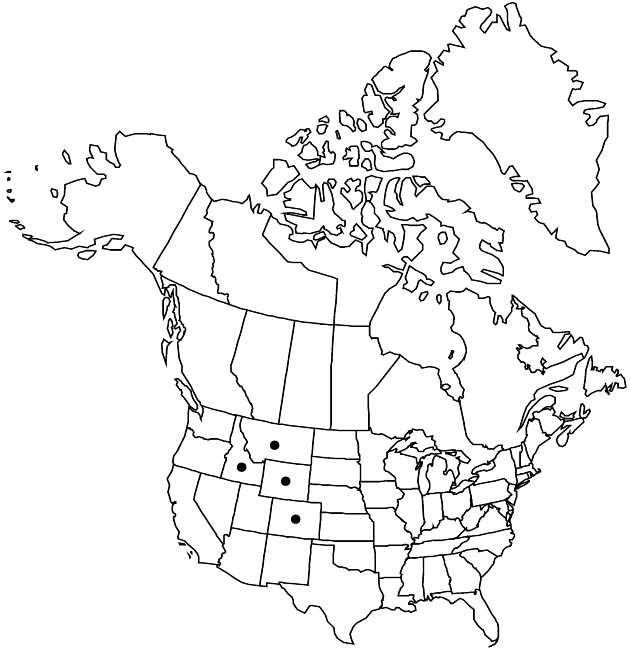Packera debilis
Phytologia 49: 46. 1981.
Perennials, 20–50+ cm; ± fibrous-rooted (caudices weakly branched, relatively short). Stems 1 or 2–4, clustered, bases sparsely floccose-tomentose or glabrous, leaf-axils tomentose. Basal leaves (and proximal cauline, turgid) petiolate; blades elliptic to ovate or subreniform, 20–40+ × 15–30+ mm, bases cuneate to subcordate, margins subentire or crenate to crenate-dentate. Cauline leaves gradually reduced (sessile; pinnately lobed, sinuses deep, rounded, ultimate margins entire or subentire). Heads 6–20 in open or compact, corymbiform arrays. Peduncles ebracteate (or bractlets short), glabrous or sparsely hairy. Calyculi inconspicuous. Phyllaries 13 or 21, green (tips cyanic), 6–8+ mm, glabrous. Ray-florets 0. Disc-florets 45–65+; corolla-tubes 3–4 mm, limbs 2–3 mm. Cypselae 1–2 mm, glabrous; pappi 4.5–5.5 mm. 2n = 46.
Phenology: Flowering late Jun–mid Aug.
Habitat: Meadows, usually in alkaline soils
Elevation: 1700–3000 m
Distribution

Colo., Idaho, Mont., Wyo.
Discussion
Packera debilis is the most abundant of the rayless species of Packera in the southern Rocky Mountains. It is infrequently collected, nearly always from wet, alkaline meadows. The lobing and subsucculent nature of the leaves may be related to the substrate; that has not been tested experimentally.
Selected References
None.